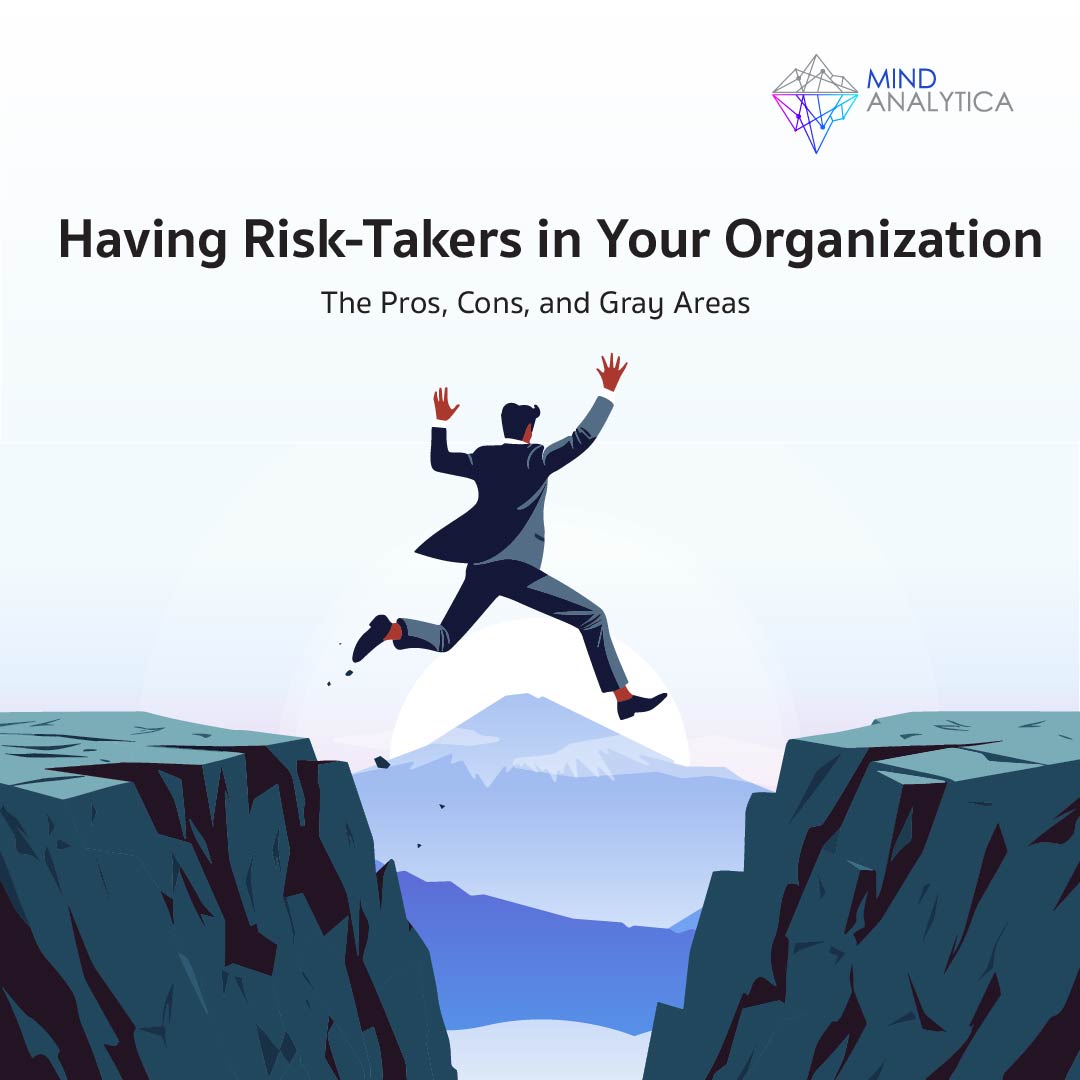Having Risk-Takers in Your Organization
10 กรกฎาคม 2567 - เวลาอ่าน 4 นาที
The Pros, Cons, and Gray Areas
The Bright, Dark, and Gray Sides of Risk Takers at Work: Criterion Validity of Risk Propensity for Contextual Work Performance
You cannot succeed without the risk of failure. You cannot have a voice without the risk of criticism. You cannot love without the risk of loss. You must go out and you must take these risks.
Charlie Day
These are the words of American actor Charlie Day, spoken at the graduation ceremony for new graduates at Merrimack College in 2014. This message is in stark contrast to the traditional way of thinking about "ideal" employees: follow the rules, take the least risk possible, and do as you're told. This mindset often leads to risk-taking employees being seen as a liability rather than a valuable asset to the organization. Many catastrophic business failures, such as the 2008 US financial crisis or the 2001 Enron accounting scandal, were partly the result of reckless risk-taking by bankers, leaders, and employees.
In contrast to the traditional view, organizational scholars recognize the pros and cons of risk-taking in the workplace. Numerous books have been written about the value of breaking rules and encouraging change, as the quote above suggests. Risk-takers are a key factor in innovation, courage, and the fight for social justice. The greatest organizational successes or failures can be the result of risk-takers. Indeed, risk appetite is not inherently a good or bad trait in a person. In the context of work, it can be said that it is an internal capacity that leads employees to take risks in their work for better or worse, but it is a trait that varies from person to person. Risk-taking can lead to very good or very bad things.
A 2024 study by three university professors, Don C. Zhang, Clare L. Barratt, and Rachel Williamson Smith in the United States, hypothesized that risk propensity leads to willingness to take risks at work, which in turn leads to behaviors that affect job performance. They further hypothesized that risk propensity also moderates the relationship between these two variables.
The researchers divided work-related behaviors into three categories based on their positive and negative impact on the organization: (a) Organizational citizenship behaviors (OCBs), which are behaviors that benefit the organization; (b) Counterproductive workplace behaviors (CWBs), which are behaviors that harm the organization; and (c) Prosocial rule-breaking behaviors (PRBs), which can have both positive and negative consequences, so they can be said to be gray behaviors.
The results of the study found that:
- Risk-taking employees are more likely to engage in negative behaviors in the organization, such as CWBs or gray behaviors such as rule-breaking for others.
- In individuals with a high risk-taking personality and a high willingness to take risks at work, there is a tendency to mediate the behavior of OCBs and PRBs in risk-taking individuals.
- The more risk-taking individuals perceive the risk, the more likely they are to engage in risky behavior. However, for non-risk-taking individuals, the more they perceive a behavior to be risky, the less likely they are to engage in it. The perception of the risk of different types of work behavior leads risk-taking individuals to be more likely to engage in those behaviors, but non-risk-taking individuals are less likely to do so.
In conclusion, the study is a response to the question of whether risk-taking employees are a valuable asset or a liability to the organization and whether or not to hire risk-taking employees. The researchers argue that hiring risk-taking employees is still a risk for the organization because, while these employees can be drivers of social change or new innovation, they are also more likely to take unethical risks or CWBs. Therefore, it is important to set boundaries according to the situation to help achieve positive outcomes and reduce the negative consequences of risk-taking. It is also possible that risk-taking can lead to good things under proper management.
Original Article
Zhang, D. C., Barratt, C. L., & Smith, R. W. (2024). The bright, dark, and gray sides of risk takers at work: criterion validity of risk propensity for contextual work performance. Journal of Business and Psychology, 39(2), 275-294.



